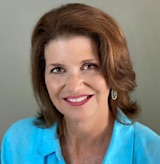Starting a Writing Club Outside the Classroom
By Sharon D. Ratliff
Updated by the author with new material added (1/28/25)

A extracurricular writing club can be a safe space for students to escape the world, express true feelings, and embrace creative ideas.
So how do we as teachers facilitate a safe space? Although my curriculum allows students to write, I realized that students wanted an opportunity to write outside the walls of the classroom and connect with other friends beyond their designated English period.
So I decided to start a writing club in our middle school that would exist beyond curriculum boundaries and provide a comfortable, social experience for all writers.
Three years into the experiment, here are some tips and tricks I’ve learned along the way. I hope these suggestions will help you establish your own campus writing club.
Establish a time and common place to meet
Meeting in a common area encourages multiple grade levels to participate and avoids the stigma that the writing club is for a certain type of student. Our club meets 3 times a month in the library from 8:00 till 8:45. Membership is flexible; any student may join the club at any time. Attendance varies from 30 students to 10 students.
Our most important rule
Using an open platform, students created the rules for writing clubs. Specifically, I wrote down what they thought a writing club should look like, and we discussed their suggestions. One of the first “rules” the students established in the writing club is: there are no “rules” or limitations on what you write! Writing is a haven from the constant barrage of what thumps us in the outside world.
Let the students name the writing club and establish a “purpose”
While there are no “rules of the writing club”, students came up with the following purpose: freely express themselves in any genre they select, use words to encourage others, receive feedback from peers on personal writing, and participate (if you want to) in various writing contests. Writing club embraces both handwriting and using technology to write.
Without a doubt, students need to name the club to establish ownership. To facilitate this process, students brainstorm for one meeting and, the following week, vote on what the club will be called. Some of our club names include: Scribe Tribe, Ink & Fable, and Quill to Page.
Build a community
Using icebreakers, giving out free “journals” (colorful composition books) and pens, providing publishing opportunities, and giving occasional celebration snacks help build a community. For ways I use activators to build community, you may click here.
Use your Learning Management System (LMS)
I created a course on our district LMS – Canvas. The course is used for students to post their writing and gather inspiration from the group. I also use the LMS to inform the members about upcoming opportunities to compete in writing contests. Numerous contests abound; here is an updated resource I use to find writing contests:
Establish a light agenda for meetings
Students thrive on routine. If students know the basic format, their energy can be funneled into creation instead of guessing what we will do. The agenda consists of an activator which may include bizarre nature pictures, a sentence study, a cartoon, a video, or an introduction to a contest. Drawing inspiration from 100 Days of Summer Writing from Rebekah O’Dell’s website Moving Writers, students respond to anything that piques their interest.
After the warmup, students springboard to work on any type of writing they choose. Sometimes, I encourage students to group themselves according to the genre they are working on.
All levels of writers are welcome
Writing Club is an eclectic group. Some students come just to write haikus or journals, some to write a rap, and some seek specific feedback for a writing contest piece. We’ve also had some students come to get feedback about their English essays!
Words of encouragement as a writing prompt
Our writing club had some stationery donated. We have used this to write notes of encouragement to custodians, counselors, or other “unseen” yet important employees in the school. Since there are no rules of writing club, this is not a requirement. Yet, students love to participate, and this is where they begin to learn how much their words matter.
Try this advice column writing activity
One of our activators consisted of students responding to an old newspaper column featuring a teen seeking advice. We then compared the club members’ responses to the actual advice published. Some club members then asked if they could write an advice column for our school. Yes!
Club members created a QR code from a Google Form for all students on our campus to anonymously submit problems to the writing club. A group of students from the writing club choses a question and drafts an answer. I then proofread the answer for content, and the writing club students alternate on who will record the answer for playback during the school announcements.
Have fun. Avoid lots of rules.
I hope these tips and tricks help any ELA teacher interested in starting a writing club. Just remember – there are no rules; there’s no need for the writing police. Just for students who want to connect and create. While kids may struggle with self-image, peer relationships, and communication, their words matter. And ink and paper offer no judgment.
Addendum: 15 months later
Since publishing this article, I have shifted from the role of classroom teacher to a gifted and talented facilitator. Currently, I serve two different junior highs, enabling me to start writing clubs at both campuses. (Double the fun and a chance to tell students that their words matter!) Here are some ways I have tweaked Writing Clubs over the past two school years.
- Activators – If you want access to more activators to build a writing community, feel free to use some of these ideas.
- Where to Write – Students are divided between writing online and writing on paper. One of the free resources I have stumbled upon is bookcreator.com, an online application that allows students to create content using various templates. My writing club students like to write on Google Docs and then publish using Book Creator.
- Create and Appreciate – Students like using words to encourage others.Operation Gratitude is one way for students to write to first responders or people serving in the military. (As a writing club sponsor, you must register for your club if you participate in Operation Gratitude.)
- Celebrate with an Anthology – An anthology allows students to publish their best work. I have students share what they want to publish on a Google Doc and then submit the compiled anthology to our school district print shop. At our last meeting, each student gets a copy of the anthology. We celebrate by having each writer read their writing aloud, and they share the inspiration behind their published work.
- Recruit help – Writing club does not take lots of planning, but it is fun to work with another colleague or a student leader. I am fortunate to have another teacher at one of my schools to bounce ideas off of and a student leader at another school who loves to spread the word about writing club fun.
PS: Please note that these writing clubs are not restricted to students in gifted and talented programs!
Sharon Ratliff (@sharondratliff) recently shifted from 7th grade ELA teacher to middle school gifted and talented facilitator in Katy, Texas. Before stepping into the mysterious land of middle school, Sharon taught upper elementary in Texas, Florida, and with the Department of Defense.
Over the past 20 years, Sharon has mentored young teachers, hoping to pass along a love for educating young minds. She enjoys working with all students, developing curricula that emphasizes critical thinking and discovering reading and writing techniques that empower students in real-life applications. See Sharon’s other MiddleWeb articles here.





































Sharon, this is wonderful. I wish I had had such a club as a middle schooler myself. Your tips are very helpful — the way that you create structures around what is a very open space. I think that balance is key for our age group (I teach 8th grade).
I’ve just written a book – Who Gets To Write Fiction: Opening Doors to Imaginative Writing for All Students — about creative writing and how it can and should be a central part of ELA and our study of literature. The book is more focused on integrating imaginative writing regularly into our regular class work. However, there are always a number of my 8th grade students who really take to fiction and/or poetry writing and want to continue.
My colleague in the HS has started a creative writing club and many of my now former students have joined. I will share your article with him. But I’ll also considering starting a MS club after school. A space for those who are called beyond the classroom and school day to write is important.
Ariel,
Thank you for the positive feedback. I’m excited about your book and will check it out! If you start a writing club at your school, maybe we can Zoom sometime and just exchange ideas…
My former students started a creative writing club at their high school and published their first anthology last year. It is amazing. These kids crave a space to write beyond the lines…
Thank you Sharon Ratliff for a thought provoking article. I am a retired teacher, but I still look for activities in which I can become involved. I was an elementary schoolteacher in my early teaching but spent 26 rears in middle school math along with 10 years of middle school language arts. I get involved with church and community education activities when they are available.
Glendora,
I am sure you are a WEALTH of knowledge! Retired teachers are treasures! I hope you will continue to be involved with your church and community education opportunities–maybe there could be a writing club opportunity there? If your church does any type of Thanksgiving baskets, gift gathering, or shoe boxes students could write notes of encouragement, experiment with poetry, or compose post-it positives. Thank you for reading my article :).
Mrs. Ratliff,
Hello again! I used to work as a helping aid in your classroom several years ago. I am currently teaching 6th grade ELAR and have started a new creative writing club at our school. Upon researching for materials, I came across your article. The tips and resources you included are perfect to help get me started. Our first meeting is coming up and the 6th grade students are beyond excited. I have several who have never been engaged in school or participated in activities, but so fired up about this club.
I also have a super sweet student from the Ukraine who loves to writing and art, but knows very little English. She is hoping to participate to help her learn the language and translate some of her stories and poems into English. I just LOVE this!! Any additional resources or tips would be greatly appreciated.
Thanks again for this article!
Hi Candice,
I am so excited you are starting a writing club and found this article helpful! You will be a phenomenal sponsor! I currently have two writing clubs for the schools I am assigned to. Feel free to email me and I can share additional resources as I have built up my “library” of Writing Club activators.
Thank you so much!!
Great Article Sharon, truly inspirational and thankyou for sharing your wonderful experiences. I wanted to know how do you manage to check every students writing? How do you give feedback and how do you collect data or figure out that the program is a great sucess? Appreciate your sharing!
Best Regards
Rashmi
Hi Rashmi,
Thanks for reaching out!
Since Writing Club is an elective club outside of the classroom, I do not check every student’s writing. I do have students confer with each other and I read any writing before publishing an anthology of collective works from our writing club. I use the same model for the classroom and have students submit writing on our LMS (Canvas). A learning management system allows students to scan handwritten pieces or share a Google Doc. I then comment on the piece of writing with the lens of looking at what we’ve discussed in class. Writing takes time, and the essential idea for student writing is to look at how students progress as writers according to skills and strategies modeled and practiced in class.
Hi Rashmi,
Thanks for reaching out!
Since Writing Club is an elective club outside of the classroom, I do not check every student’s writing. I do have students confer with each other and I read any writing before publishing an anthology of collective works from our writing club. I use the same model for the classroom and have students submit writing on our LMS (Canvas). A learning management system allows students to scan handwritten pieces or share a Google Doc. I then comment on the piece of writing with the lens of looking at what we’ve discussed in class. Writing takes time, and the essential idea for student writing is to look at how students progress as writers according to skills and strategies modeled and practiced in class.